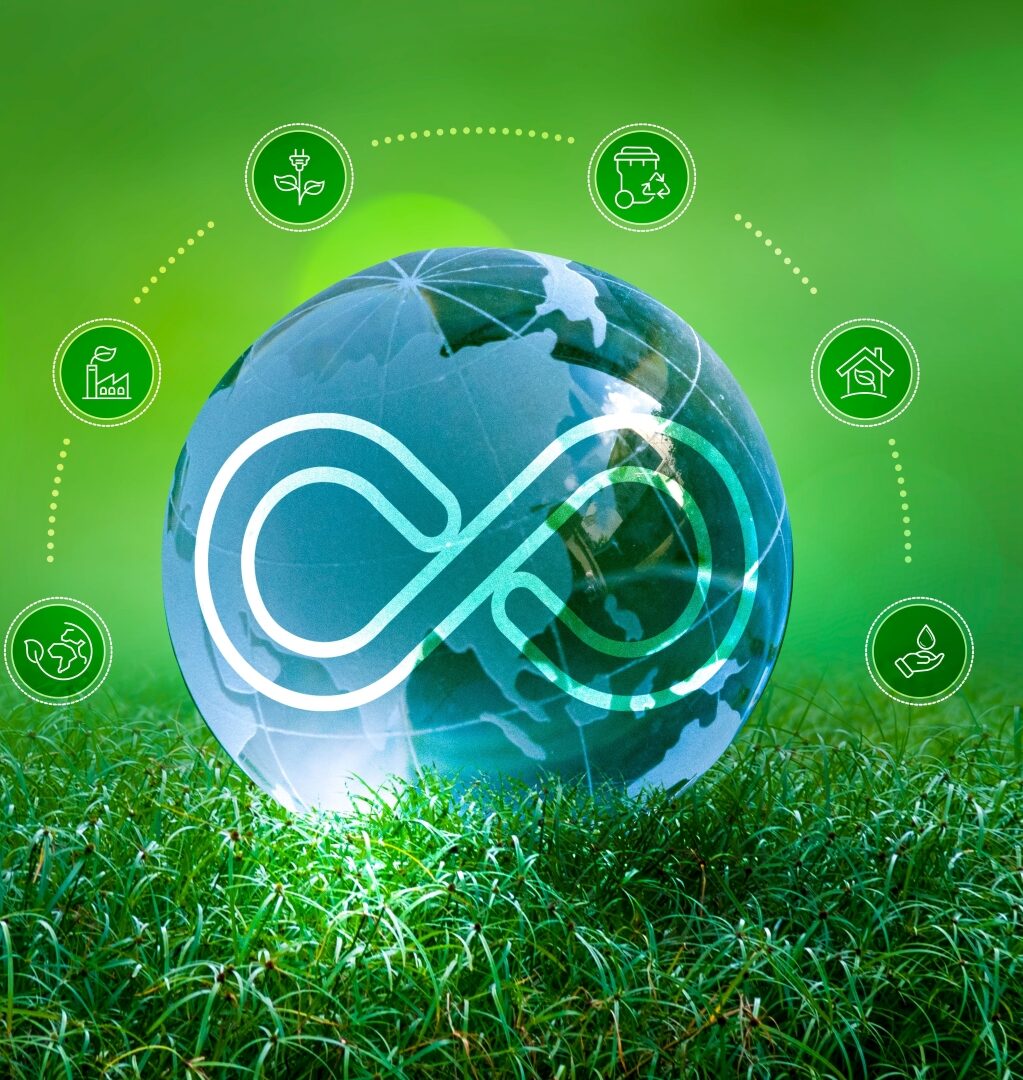The concept of circularity has gained traction in many industries in recent years. A circular economy is one in which resources are kept in use for as long as possible. This reduces waste and promotes sustainability. It is circular in the sense that downstream products are reused as resources for upstream processes. This presents many opportunities for B2B businesses, but it also comes with its own challenges.
What is circularity?
Circularity is a concept based off of a closed-loop system where waste is minimised and resources are utilised efficiently. Resources are kept in the system for as long as possible through reuse, repair, and recycling. This is in contrast to the traditional linear economy where resources are extracted, used, and then disposed of.
The circular economy is not just about reducing waste though. It also strives to create value from waste. By treating waste as a valuable resource, businesses are able to get more usage out of individual resources.
Opportunities
The shift in perspective regarding waste can lead businesses to reducing costs. The reduction of waste and reuse of materials can decrease the costs of materials and waste disposal. Furthermore, there are opportunities for additional revenue streams. While waste can be used in upstream or adjacent processes, it can also be sold to other businesses. As the saying goes, “one man’s trash is another man’s treasure.”
An example of this would be a business that sells office furniture that creates a closed-loop supply chain system. By using sustainable materials for their products and designing them to be easily disassembled and reused, businesses can then offer a take-back programme where used furniture can be refurbished or recycled. In a sense, by retrieving the “waste”, businesses are able to put them to use to generate more revenue or decrease material costs. Selling the used furniture to recycling companies is also another source of revenue.
Additionally, The circular model is congruent with sustainability practices that emphasise reusing materials and reducing waste. Thus, with the rise of environmentally-minded customers, a circular economy becomes marketable.
Challenges
Even with the opportunities presented, adopting a circular economic business model does come with its own challenges. For instance, as much as sustainable practices are a source of good reputation for businesses, it isn’t useful if customers are not aware of those practices or are not aware of the consequences of those practices. Of course, there is a method to marketing sustainability.
As well as upfront costs required for marketing the shift to a circular economy, the establishment of circularity may also require upfront costs. This might mean that businesses would perhaps not see the return of their investments immediately. This can be a challenge for businesses already struggling to meet their bottom line.
B2B supply chains are usually already complex as is. They can involve multiple countries and suppliers which makes it difficult to track resources and ensure that they are participating in the circular economy. For businesses that are pivoting towards this kind of business model, they may already have specialised equipment and use materials that are difficult to reuse or recycle. This can add to the initial costs of establishment.
Conclusion
Circularity presents both opportunities and challenges for B2B companies. There are challenges to be addressed, but once those hurdles are overcome there are clear benefits related to sustainability and costs. By reducing waste and decreasing costs, B2B businesses can position themselves for long-term success in the sustainable economy. As the demand for sustainable products and services increase, businesses adopting circularity could be in a better place to capitalise on it and meet the needs of customers and stakeholders.











